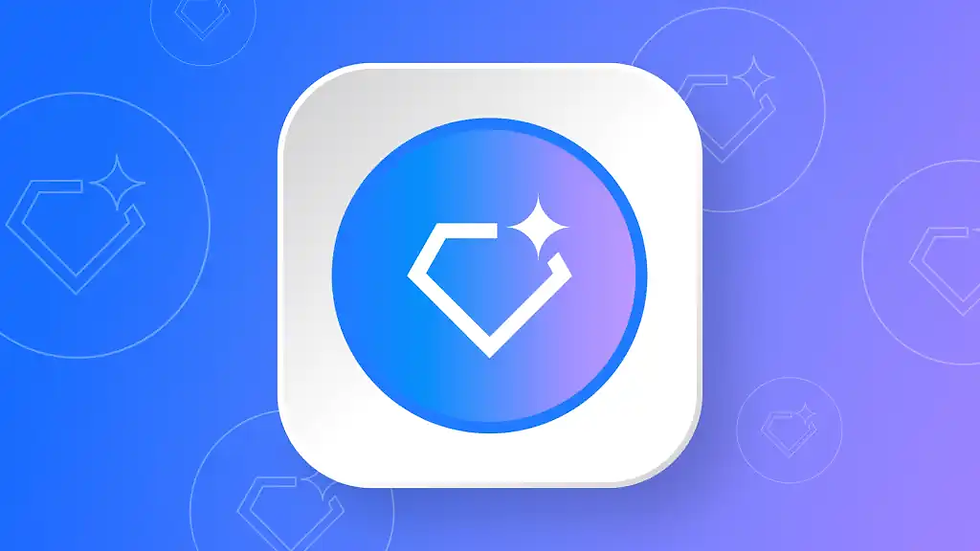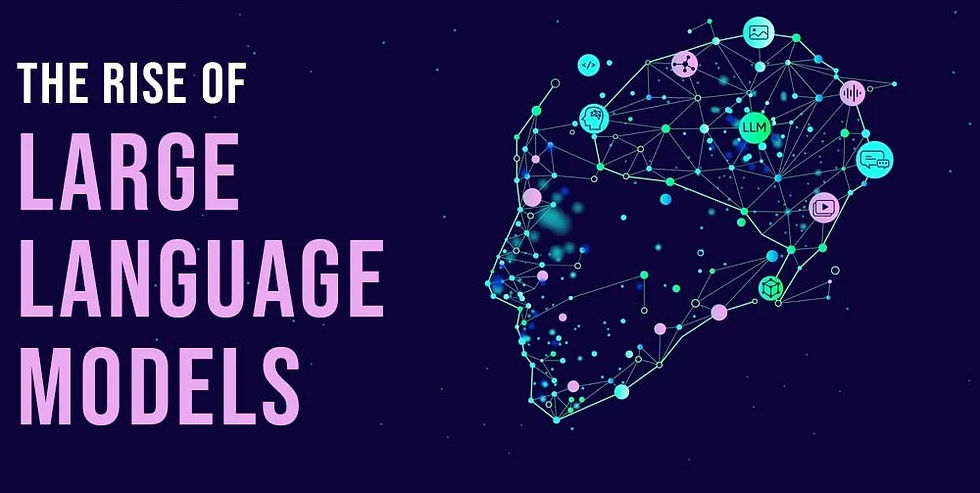Beyond Forgetfulness: How to Build a Powerful AI Memory With Gemini Gems
- Olivia Johnson

- Oct 4
- 7 min read

We've all been there. You spend an hour briefing an AI assistant on a complex project, detailing key stakeholders, specific terminology, and long-term goals. You return the next day, ready to pick up where you left off, only to be met with a digital blank slate. The AI has forgotten everything. This frustrating cycle, a core limitation of modern AI, has long been the primary barrier to creating truly personal and effective digital partners. But what if you could give your AI a perfect, persistent memory?
A groundbreaking method, pioneered by power users, leverages a feature within Google's Gemini called "Gems" to solve this very problem. By creating a simple "memory card" document, users can now build a robust, long-term AI memory, transforming their AI from a forgetful tool into a knowledgeable collaborator. This article explores this revolutionary technique, its practical applications, and how you can start building a smarter AI today.
What Exactly Is the AI Memory Problem?

At its core, the AI memory problem isn't a flaw but a feature of its design. Most large language models (LLMs) are "stateless," meaning they don't retain information between separate chat sessions. Each new conversation starts from scratch. Their "memory" is confined to the context window of the current session—the amount of text the model can "see" at one time.
Common workarounds like Retrieval-Augmented Generation (RAG) attempt to solve this by searching through past conversations or documents to provide relevant context. However, as many users have found, these systems are often clunky and unreliable. The AI might fail to find the right information or misinterpret the context, leading to inconsistent performance. This fundamental limitation prevents AIs from building a cumulative understanding of your needs, preferences, and ongoing projects.
Why Improving AI Memory Is So Important

A persistent AI memory is more than a convenience; it's a game-changer for productivity and personalization. Imagine an AI that remembers:
Your professional role: Your job title, key responsibilities, and the projects you're leading.
Your personal preferences: Your writing style, communication tone, and the specific formats you prefer for reports.
Project-specific knowledge: The entire history of a project, including decisions made, data points, and future milestones.
Complex world-building: For creatives, an AI that remembers every character, location, and plot point in a fictional universe.
According to a 2024 study on human-AI collaboration by Stanford University, "contextual continuity" is one of the most significant factors in establishing user trust and efficiency. When an AI remembers, it reduces repetitive setup, minimizes errors, and evolves into a true extension of your own mind. This is the key to unlocking the next level of AI-powered productivity.
Gemini Gems: A Breakthrough for Custom AI Memory
Enter Gemini Gems, Google's answer to OpenAI's custom GPTs. Gems allow users to create specialized versions of Gemini by providing a name, custom instructions, and, most importantly, up to 10 reference files. While this feature itself is powerful, savvy users quickly realized its true potential lies in a clever hack: using one of those file slots for a dynamic "memory card."
The secret sauce is Gemini's enormous 1 million token context window. To put that in perspective, 1 million tokens is roughly 750,000 words—the equivalent of the entire Lord of the Rings trilogy. This vast capacity allows a Gem to ingest a massive document containing tens of thousands of words of curated knowledge, instructions, and past interactions. By dedicating a file to serve as a persistent brain, users can effectively bypass the stateless nature of the AI.
How to Build Your AI's Long-Term Memory: A Step-by-Step Guide

Creating your own AI memory is surprisingly straightforward. It relies on a simple, repeatable workflow that instructs the AI to not only use its memory but also to help you update it.
Step 1: Create Your "Memory Card" Document
Start a new document (e.g., in Google Docs, or as a simple .txt file). This will be your AI's brain. Populate it with foundational knowledge. This can include:
Personal Information: Your name, role, and goals.
Behavioral Instructions: "Always respond in a professional tone," "Format summaries using bullet points," "When I ask for a report, use the following structure..."
Core Knowledge: Key facts, figures, terminology, or lore for a specific domain (e.g., a D&D campaign, a programming project, a marketing strategy).
Step 2: Create a New Gemini Gem
In Gemini, create a new Gem. Give it a name (e.g., "Project Manager AI," "D&D Dungeon Master"). In the instructions, tell it that its primary directive is to use the uploaded file as its core memory.
Step 3: Upload the Memory Card
Upload your document from Step 1 as one of the Gem's reference files.
Step 4: Interact and Update
Have a conversation with your new, memory-enhanced Gem. At the end of the session, use a prompt to have the AI consolidate the new information. A simple but effective command is:
"You must use the provided document as your RAG memory. Now, based on our conversation today, create the full text for an updated file that includes all the old information plus the new details we discussed. Make sure to integrate the new memories seamlessly."
Step 5: Replace the Old File
Gemini, for security reasons, cannot directly edit uploaded files. It will instead generate the complete text for a new file. Copy this text, paste it into your memory card document (replacing the old content), and re-upload it to your Gem.
By repeating this process, you create an iterative loop of learning. Users report that after just a week, their memory cards can exceed 20 pages, with the AI flawlessly referencing details from the very first conversation.
Real-World Applications of Enhanced AI Memory

This technique isn't just theoretical; users are already deploying it in innovative ways:
Professional Knowledge Management
A marketing strategist can create a Gem that remembers brand guidelines, target audience personas, and performance data from past campaigns.
Creative World-Building
A Dungeons & Dragons player created a Gem for their campaign, uploading PDFs of the campaign setting and third-party materials. The AI could instantly answer questions about any NPC, location, or rule, acting as a perfect Dungeon Master's assistant.
Personalized Coding Helper
A developer can build an AI memory containing documentation for specific libraries, personal coding conventions, and snippets from previous projects, drastically speeding up development time.
Log-Keeping and Fact-Checking
By instructing a Gem to maintain a log of the conversation within its memory update, users have found it significantly reduces AI "hallucinations" or fabricated information. The AI is forced to ground its responses in a recorded history.
The Future of AI Memory: Opportunities and Challenges
While the "memory card" method is a powerful workaround, it highlights the current limitations of commercial AI systems. Manually updating a file after each session can be cumbersome. Users have reported several challenges:
Manual Updates
The lack of automatic file saving is the biggest hurdle. The user must act as the bridge, copying and pasting the updated memory.
Sharing and Collaboration
Unlike custom GPTs or other platforms, Gemini Gems cannot currently be shared with a team, limiting their collaborative potential.
Inconsistent File Reading
Some users report that even with this method, Gemini can occasionally fail to read the file correctly or confuse context from other, non-Gem chats.
Platform Comparisons
Competing services like NotebookLM (also from Google) offer more robust document handling (up to 50 files) and sharing features, though perhaps without the same elegant, single-brain integration.
Despite these challenges, the trend is clear: users demand better AI memory. This grassroots innovation is likely to push developers like Google and OpenAI to build more integrated, automated memory solutions directly into their platforms. The future may involve AI assistants that automatically summarize and consolidate new information into their knowledge base without user intervention.
Conclusion: Key Takeaways on Building a Better AI Brain

The frustration of a forgetful AI is no longer an insurmountable problem. By leveraging the vast context window of Gemini and the file-handling capabilities of Gems, anyone can construct a persistent, long-term AI memory. This "memory card" technique empowers you to build a truly personalized assistant that grows and learns alongside you.
While the process still requires manual steps, it represents a fundamental shift in how we interact with AI. We are moving from disposable conversations to building a cumulative, long-term partnership with our digital tools. By explicitly telling an AI what to remember, you take control of its knowledge, ensuring consistency, accuracy, and a dramatically improved user experience.
Frequently Asked Questions (FAQ) about AI Memory and Gemini Gems

1. What is the core problem with current AI memory?
The main issue is that most AI models are "stateless," meaning they don't retain information between conversations. Their memory is limited to the current session's context window, so they "forget" everything once a chat ends, requiring you to repeat information constantly.
2. Is updating the AI's "memory card" automated?
No, not currently. This is the main challenge of the method. The AI can generate the text for an updated memory file, but for security reasons, it cannot overwrite the existing file. The user must manually copy the new text, replace the old content in their document, and re-upload it to the Gem.
3. How do Gemini Gems for AI memory compare to ChatGPT's custom GPTs?
Both allow for custom instructions and file uploads to create specialized AIs. However, the key advantage for the AI memory technique in Gemini is its 1 million token context window, which is significantly larger than what's available for ChatGPT. This allows for a much larger and more detailed "memory card" document. On the other hand, custom GPTs currently have better sharing and team collaboration features.
4. What do I need to start building a custom AI memory with Gemini?
You only need access to Google Gemini and a place to store a text document (like Google Docs or any simple text editor). The process involves creating a new Gem, writing initial instructions and knowledge into your document, uploading it, and then using a specific prompt to have the AI help you update it after your conversations.
5. What's the next big step for personal AI memory systems?
The future likely involves the automation of the memory-building process. We can expect AI platforms to integrate "long-term memory" as a native feature, where the AI can automatically decide what information is important to retain from a conversation and add it to its knowledge base without requiring manual file updates from the user.

